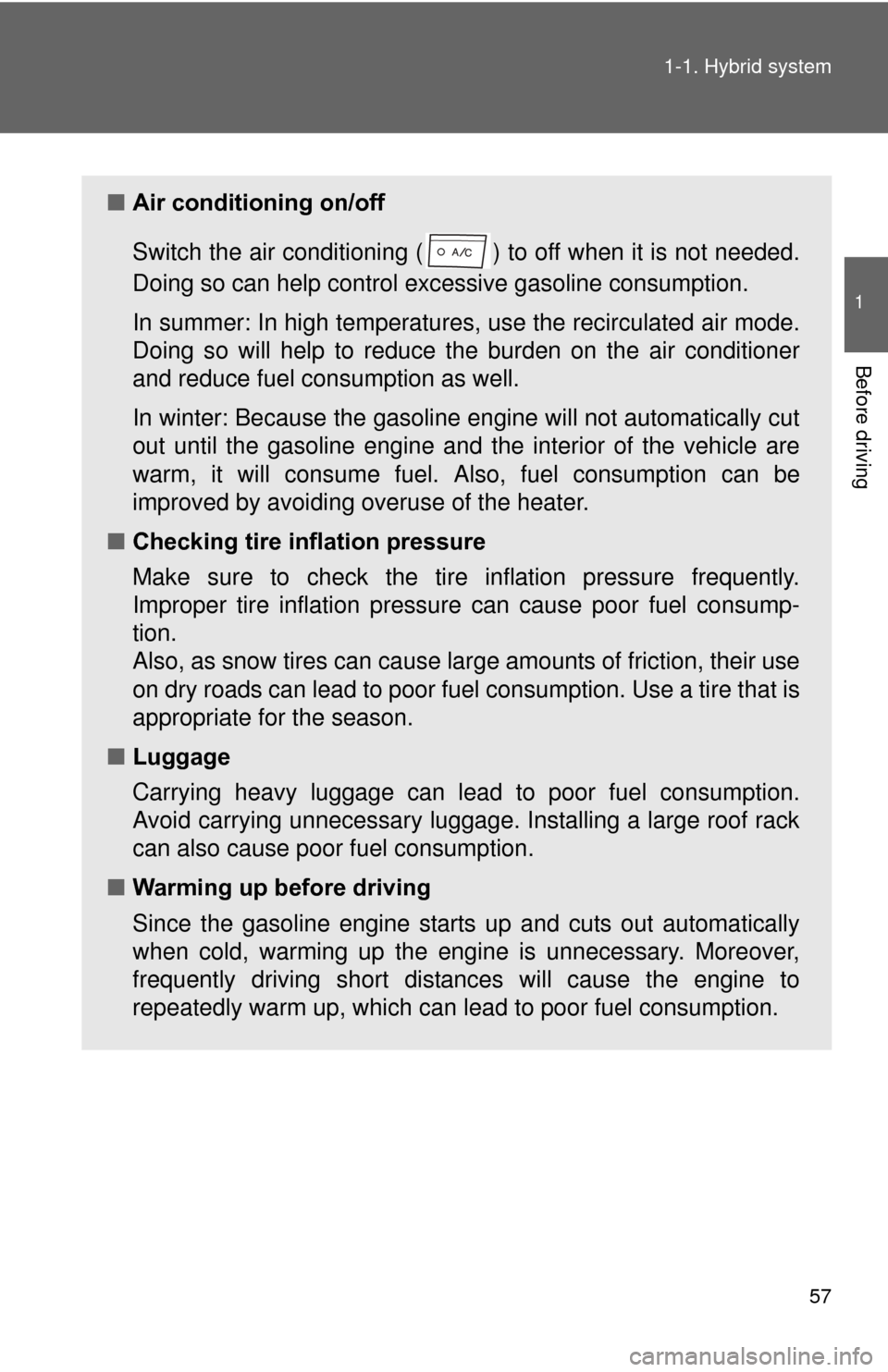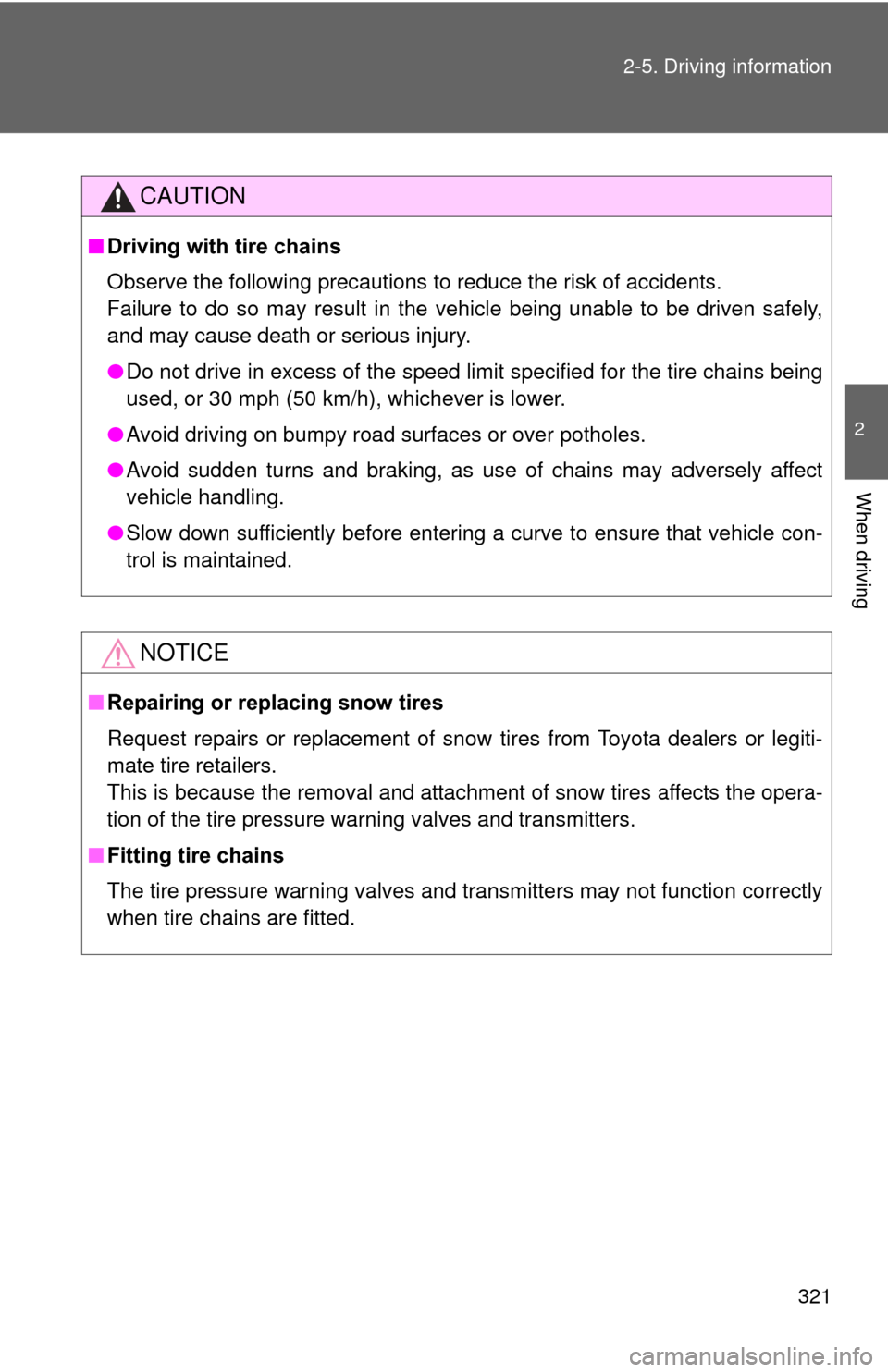Page 5 of 636

1
2
3
4
5
6
7
5
4-1. Maintenance and careCleaning and protecting the vehicle exterior............ 396
Cleaning and protecting the vehicle interior............. 399
4-2. Maintenance Maintenance requirements ..................... 402
General maintenance.......... 405
Emission inspection and maintenance (I/M)
programs........................... 409
4-3. Do-it-yourself maintenance Do-it-yourself service precautions ....................... 410
Hood ................................... 413
Positioning a floor jack ........ 416
Engine compartment ........... 419
12-volt battery ..................... 431
Tires .................................... 437
Tire inflation pressure ......... 447
Wheels ................................ 451
Electronic key battery.......... 454
Checking and replacing fuses ................................. 456
Light bulbs........................... 467 5-1. Essential information
Emergency flashers............ 484
If your vehicle needs to be towed........................... 485
If you think something is wrong ............................ 492
5-2. Steps to take in an emergency If a warning light turns on or a warning buzzer
sounds.............................. 493
If a warning message is displayed ...................... 507
If you have a flat tire ........... 523
If the hybrid system will not start ............................ 538
If you lose your keys........... 540
If the electronic key does not operate properly ......... 541
If the 12-volt battery is discharged........................ 543
If your vehicle overheats .... 549
If the vehicle becomes stuck ................................. 554
If your vehicle has to be stopped in an
emergency ....................... 556
4Maintenance and care5When trouble arises
Page 9 of 636
9
Fuel filler door
P. 131
Rear turn signal lights
P. 211
Rear window defoggers P. 346
Tires
●
Rotation
● Replacement
● Inflation pressure
● Information
P. 437
P. 523
P. 569
P. 575
Rear side marker lights
P. 250
Tail lights P. 250
Camera*Side doors P. 87
Back door P. 93
Rear window wiper P. 262
: If equipped
*: Refer to “Display Audio System Owner’s Manual”
or “Navigation System Owner’s Manual”.
License plate lights
P. 250
Page 15 of 636
15
Pictorial indexInstrument panel
Headlight switch
Turn signal lever
Fog light switch
P. 250
P. 211
P. 256
Pre-collision braking off switch P. 304
Parking brake pedal P. 212
Fuel filler door opener
P. 131Tire pressure warning reset switch P. 439
Windshield wipers and
washer switch
Rear window wiper and
washer switch
P. 258
P. 262
Gauges and meters
Multi-information display P. 214
P. 223
Audio system*2 P. 347
Navigation system*1
SRS driver airbag
Horn
P. 140
P. 213
SRS knee airbag P. 140
Tilt and telescopic steering control lever P. 117
: If equipped
*1: Refer to “Navigation System Owner’s Manual”.
*2: Refer to “Display Audio System Owner’s Manual”.
Page 57 of 636

57
1-1. Hybrid system
1
Before driving
■
Air conditioning on/off
Switch the air conditioning ( ) to off when it is not needed.
Doing so can help control excessive gasoline consumption.
In summer: In high temperatures, use the recirculated air mode.
Doing so will help to reduce t he burden on the air conditioner
and reduce fuel consumption as well.
In winter: Because the gasoline engine will not automatically cut
out until the gasoline engine and the interior of the vehicle are
warm, it will consume fuel. Also, fuel consumption can be
improved by avoiding overuse of the heater.
■ Checking tire inflation pressure
Make sure to check the tire inflation pressure frequently.
Improper tire inflation pressure can cause poor fuel consump-
tion.
Also, as snow tires can cause lar ge amounts of friction, their use
on dry roads can lead to poor fuel consumption. Use a tire that is
appropriate for the season.
■ Luggage
Carrying heavy luggage can lead to poor fuel consumption.
Avoid carrying unnecessary luggage. Installing a large roof rack
can also cause poor fuel consumption.
■ Warming up before driving
Since the gasoline engine starts up and cuts out automatically
when cold, warming up the engine is unnecessary. Moreover,
frequently driving s hort distances will ca use the engine to
repeatedly warm up, which can lead to poor fuel consumption.
Page 293 of 636
293
2-4. Using other
driving systems
2
When driving
NOTICE
■In the following situations, the LKA will not work, or will not perform
reliably:
● When lane markers are interrupted or are not present, such as before a
tollbooth.
● When lane markers are only on one side of the road.
● When driving on a sharp curve.
● When lanes are extremely narrow or extremely wide.
● When the vehicle leans to one side an unusual amount due to a heavy
load or improper tire inflation pressure.
● When the following distance between your vehicle and the vehicle ahead
is extremely short.
● When the lane markers are broken, “Botts’ dots”, or “Raised pavement
marker”.
● When lane markers are obscured or partially obscured by sand, dirt, etc.
● When driving on a particularly bright road surface, such as concrete.
● When driving on a road surface that is bright due to reflected light.
Page 300 of 636
300 2-4. Using other driving systems
CAUTION
■Replacing tires
Make sure that all tires are of the specified size and of the same brand, tread
pattern and total load capacity. In addition, make sure that the tires are
inflated to the recommended tire inflation pressure level.
The ABS and VSC systems will not function correctly if different tires are
installed on the vehicle.
Contact your Toyota dealer for further information when replacing tires or
wheels.
■ Handling of tires and the suspension
Using tires with any kind of problem or modifying the suspension will affect
the driving assist systems, and may cause a system to malfunction.
Page 320 of 636
320 2-5. Driving information
■Tire chain installation
Observe the following precautions when installing and removing chains:
●Install and remove tire chains in a safe location.
● Install tire chains on the front tires only. Do not install tire chains on the
rear tires.
● Install tire chains on front tires as tightly as possible. Retighten chains
after driving 1/4 - 1/2 mile (0.5 - 1.0 km).
● Install tire chains following the instructions provided with the tire chains.
CAUTION
■Driving with snow tires
Observe the following precautions to reduce the risk of accidents.
Failure to do so may result in a loss of vehicle control and cause death or
serious injury.
●Use tires of the size specified.
● Maintain the recommended level of air pressure.
● Do not drive in excess of 75 mph (120 km/h), regardless of the type of
snow tires being used.
● Use snow tires on all, not just some wheels.
Page 321 of 636

321
2-5. Driving information
2
When driving
CAUTION
■
Driving with tire chains
Observe the following precautions to reduce the risk of accidents.
Failure to do so may result in the vehicle being unable to be driven safely,
and may cause death or serious injury.
●Do not drive in excess of the speed limit specified for the tire chains being
used, or 30 mph (50 km/h), whichever is lower.
● Avoid driving on bumpy road surfaces or over potholes.
● Avoid sudden turns and braking, as use of chains may adversely affect
vehicle handling.
● Slow down sufficiently before entering a curve to ensure that vehicle con-
trol is maintained.
NOTICE
■Repairing or replacing snow tires
Request repairs or replacement of snow tires from Toyota dealers or legiti-
mate tire retailers.
This is because the removal and attachment of snow tires affects the opera-
tion of the tire pressure warning valves and transmitters.
■ Fitting tire chains
The tire pressure warning valves and transmitters may not function correctly
when tire chains are fitted.